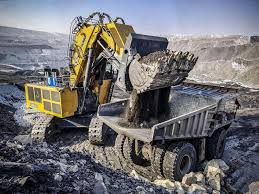
The Australian Outback is a realm of rugged beauty and harsh extremes, and it has long been a hotspot for one of the most exhilarating activities in the mining world: gold mining. The vast and remote landscape of the Outback, with its sprawling deserts and rugged terrains, provides the backdrop for some of the most significant gold mining operations in the world. Here, we delve into what makes gold mining in this region so remarkable and why it continues to captivate industry experts and adventurers alike.
The Allure of the Outback
The Australian Outback is synonymous with adventure and isolation. Its harsh environment, characterized by blistering heat and arid conditions, is a stark contrast to the lush landscapes of more temperate regions. Yet, beneath this seemingly inhospitable surface lies a treasure trove of gold. The discovery of gold in the Outback has transformed the area into a buzzing hub of mining activity, drawing thousands of workers, engineers, and investors to the region.
Modern Gold Mining Techniques
Gold mining in the Outback has evolved significantly over the years. Early prospectors relied on rudimentary tools and methods, often panning for gold in riverbeds or using simple sluice boxes. Today, the industry has embraced cutting-edge technology and sophisticated techniques to maximize efficiency and yield.
Open-pit mining is a common method used in the Outback. This involves removing large quantities of surface rock to expose the gold-rich ore beneath. Modern machinery, including massive haul trucks, excavators, and drilling rigs, plays a crucial role in these operations. These machines are designed to handle the harsh conditions of the Outback, ensuring that the mining process is both effective and safe.
Another significant advancement is the use of cyanide leaching, a process that involves dissolving gold from ore using a cyanide solution. This technique allows miners to extract gold from lower-grade ores, making previously unviable deposits economically feasible.
Environmental and Social Impact
Gold mining, while lucrative, is not without its challenges. The environmental impact of mining operations in the Outback is a major concern. The extraction process can lead to habitat destruction, water pollution, and soil degradation. In response, many mining companies are investing in sustainable practices and technologies to mitigate these effects. Efforts are being made to rehabilitate mining sites and restore the land to its natural state once operations are complete.
Socially, the influx of workers and development associated with gold mining can bring both opportunities and challenges to local communities. While mining operations can create jobs and stimulate economic growth, they can also strain local resources and infrastructure. Balancing these factors is crucial for ensuring that mining activities benefit both the industry and the surrounding communities.
The Future of Gold Mining in the Outback
As technology continues to advance, the future of gold mining in the Australian Outback looks promising. Innovations in exploration techniques, mining equipment, and environmental management are expected to enhance the efficiency and sustainability of operations. Moreover, the discovery of new gold deposits and the development of more sophisticated mining methods will likely continue to drive growth in the sector.
For those interested in the gold mining industry, the Australian Outback remains a place of fascination and opportunity. Its combination of natural beauty, rich resources, and cutting-edge technology makes it a unique and dynamic environment for mining operations. Whether you’re an industry professional or simply a curious observer, the story of gold mining in the Outback is one of perseverance, innovation, and adventure.
Conclusion
Gold mining in the Australian Outback is a remarkable testament to human ingenuity and resilience. The combination of an extreme environment and advanced technology creates a unique landscape where tradition meets modernity. The transformation of the Outback from a remote and arid expanse to a thriving hub of mining activity highlights the significant impact that gold has had on both the region and the broader Australian economy.
The evolution of mining techniques, from the early days of panning to today’s sophisticated methods such as open-pit mining and cyanide leaching, underscores the relentless pursuit of efficiency and productivity. Modern machinery and innovations have revolutionized the way gold is extracted, enabling the mining industry to tap into previously inaccessible resources. This advancement not only boosts the yield but also ensures that the process is carried out with greater precision and less environmental disruption.
Despite these advancements, the challenges associated with gold mining in the Outback cannot be overlooked. The environmental impact, including habitat destruction and water pollution, poses significant concerns. Addressing these issues requires a commitment to sustainable practices and responsible mining. The industry is increasingly focused on minimizing its ecological footprint through improved technology and rehabilitation efforts. By prioritizing environmental stewardship and implementing measures to restore mining sites, the industry aims to balance economic benefits with ecological preservation.